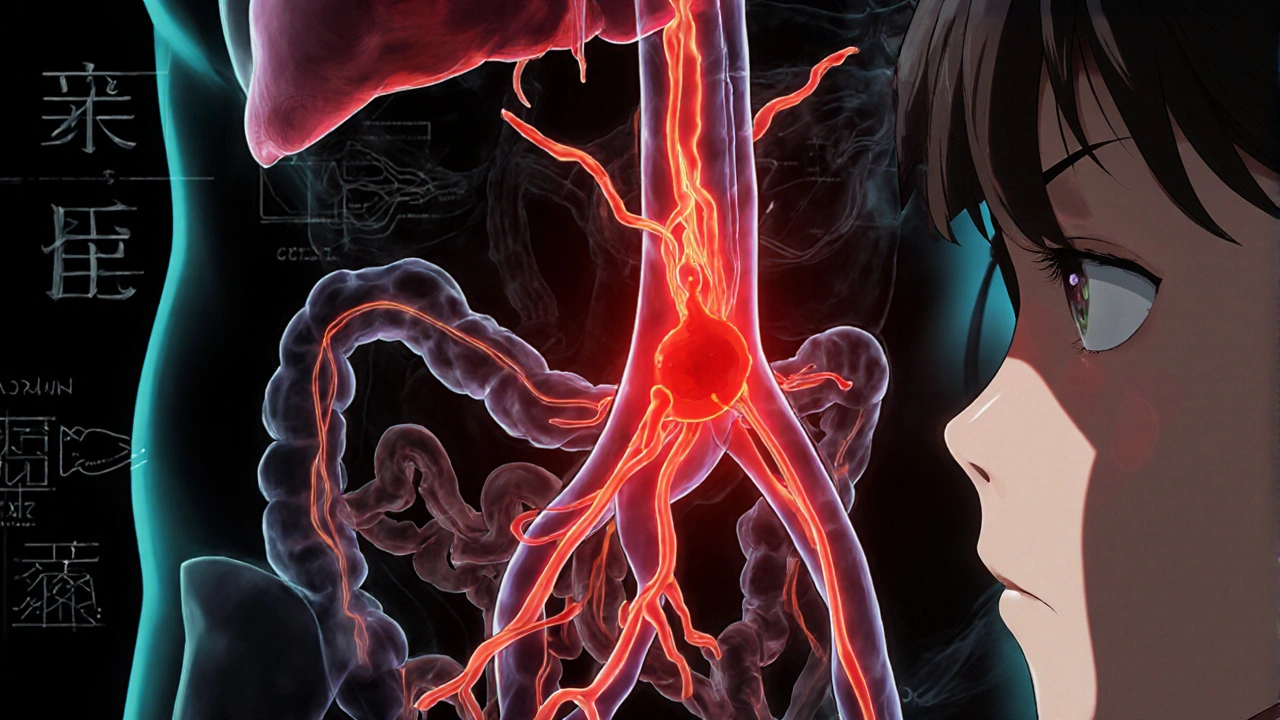PVT Diagnosis: Understanding Portal Vein Thrombosis and Its Impact
When doctors talk about PVT diagnosis, Portal Vein Thrombosis is the blockage of the main vein carrying blood from the intestines to the liver. Also known as portal vein thrombosis, it’s not just a clot—it’s a sign something deeper is wrong in your digestive or liver system. This isn’t a random event. It usually happens because of liver cirrhosis, cancer, infection, or a genetic clotting disorder. Many people don’t feel anything until it’s advanced, which is why PVT diagnosis often comes from imaging done for another reason—like unexplained belly pain, swelling, or abnormal liver tests.
What makes PVT diagnosis tricky is that it doesn’t happen in isolation. It’s closely tied to liver disease, conditions like cirrhosis that damage liver tissue and slow blood flow. When the liver is scarred, blood struggles to get through, making clots more likely. It also connects to blood clot, abnormal clotting that can stem from inherited conditions, cancer, or even long-term use of birth control pills. And it’s often found through abdominal imaging, ultrasounds, CT scans, or MRIs that show the blocked vein. These tools don’t just confirm the clot—they help doctors figure out if it’s new or old, if it’s spreading, and if there’s cancer hiding nearby.
Getting a PVT diagnosis changes the game. It’s not just about treating the clot with blood thinners. It’s about asking: Why did this happen? Is there undiagnosed liver damage? Could this be an early sign of pancreatic or liver cancer? Many patients with PVT have no symptoms at first, which is why routine scans for high-risk groups—like those with cirrhosis or recent abdominal surgery—are so important. The goal isn’t just to dissolve the clot, but to stop the next one and protect the liver from further harm.
What you’ll find in the posts below isn’t just theory—it’s real-world insight. From how PVT shows up in people with chronic liver conditions to how imaging results are interpreted, these articles cut through the noise. You’ll see how it connects to drug treatments, what complications to watch for, and how it impacts daily life. No fluff. Just what matters when PVT diagnosis comes up in your care.

